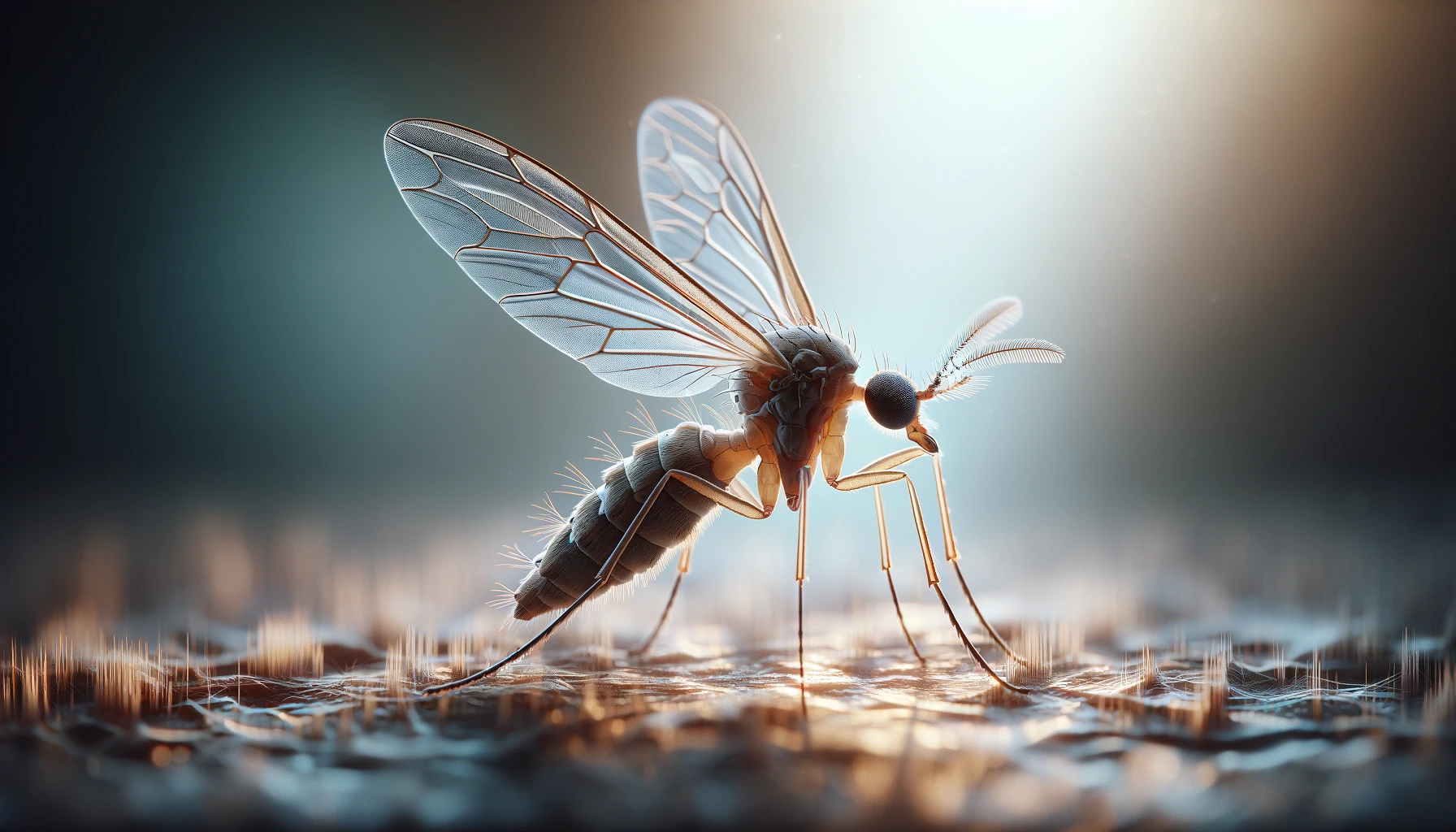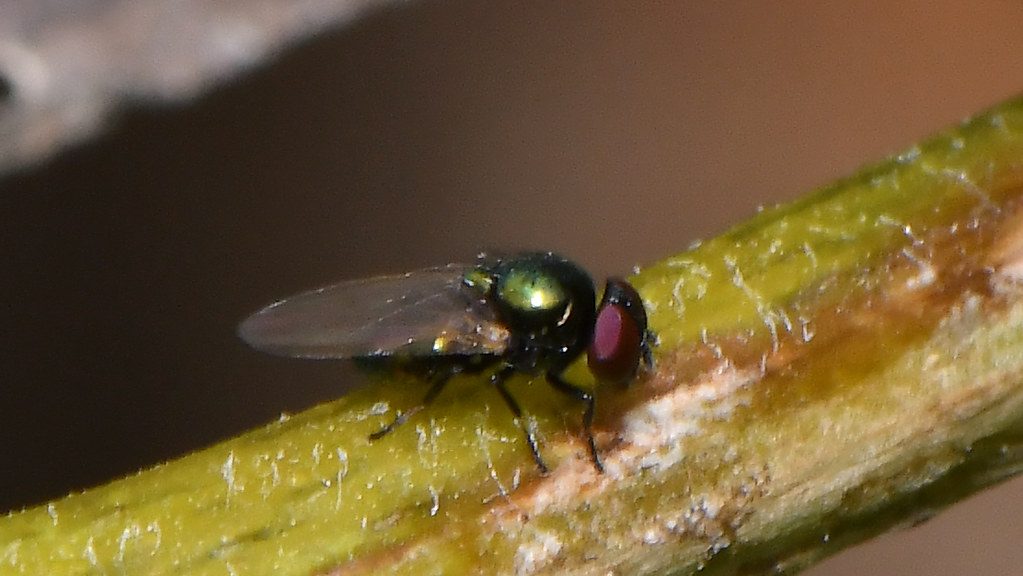Key Takeaways
- Gnats are tiny, delicate insects with long legs, transparent wings, and a range of colors, typically black, gray, or brown.
- Fungus gnats thrive around moist soil and houseplants, while gnat larvae are small, legless, and feed on decaying matter.
- Prevention involves controlling moisture, sealing trash bins, and using traps, while professional pest control can manage infestations effectively.
 Gnats are small, pesky insects often mistaken for other tiny flying pests like fruit flies or drain flies. Recognizing these insects is the first step in managing their presence around your home or garden. This guide will help you understand what do gnats look like, what do fungus gnats look like and what do baby gnats look like along with signs to identify a gnat infestation, methods to prevent and control gnats in you home including ways to distinguish gnats from other insects and gnats lifecycle.
Gnats are small, pesky insects often mistaken for other tiny flying pests like fruit flies or drain flies. Recognizing these insects is the first step in managing their presence around your home or garden. This guide will help you understand what do gnats look like, what do fungus gnats look like and what do baby gnats look like along with signs to identify a gnat infestation, methods to prevent and control gnats in you home including ways to distinguish gnats from other insects and gnats lifecycle.
What Do Gnats Look Like?


Not getting a solution?
Get your free pest control estimate today!Key Features of Gnats
-
Body Structure: They have three distinct body parts: the head, thorax, and abdomen.
-
Wings: Their wings are transparent or lightly shaded, making them look almost invisible when flying.
-
Antennae: Gnats have long, threadlike antennae, which are significantly longer than those of fruit flies.
-
Color: They are usually black, gray, or brown, though some species may have brighter markings.
What Do Fungus Gnats Look Like?
Fungus gnats are a common indoor pest, especially around houseplants, where they are drawn to damp soil. They are slightly darker than other gnat species and can be identified by their distinct features. Measuring about 1/8 inch, they have a slender, mosquito-like appearance with dark wings marked by noticeable veins. Unlike strong fliers, fungus gnats are weak and often crawl on soil or plant surfaces. Their preferred habitat is near potted plants, where they feed on fungi and decaying organic matter in the soil, making houseplants a prime breeding ground for them.
What Do Baby Gnats Look Like?
Baby gnats, or gnat larvae, look completely different from their adult counterparts. They are tiny, worm-like creatures and can often be found in moist environments. Gnat larvae are about 1/4 inch long, legless, and translucent, often appearing white or cream-colored with a distinct black head. They thrive in damp environments such as potting soil, drains, and decaying organic material. The larval stage is a crucial growth phase before they pupate and emerge as adult gnats. Baby gnats are commonly found in clusters in the soil or organic debris, feeding and growing until they transition into adulthood.Gnats vs. Other Small Flies
Gnats are often confused with other tiny flying insects. Here’s a quick comparison to help distinguish them:| Feature | Gnats | Fruit Flies | Drain Flies |
|---|---|---|---|
| Size | 1/16 to 1/8 inch | About 1/8 inch | 1/8 to 1/4 inch |
| Color | Black, gray, or brown | Brown with red eyes | Gray or black, fuzzy |
| Wings | Transparent or light-shaded | Transparent with clear veins | Broad, moth-like wings |
| Habitat | Moist soil, decaying matter | Overripe fruits, sugary areas | Drains, standing water |
Understanding Lifecycle of Gnats
Understanding the lifecycle of gnats can help you identify and control their populations effectively. Gnats undergo a complete metamorphosis with four stages:Lifecycle of Gnats
-
Eggs: Female gnats lay their eggs in moist environments like soil or organic debris.
-
Larvae: The larvae are worm-like and feed on fungi, decaying matter, or plant roots.
-
Pupae: This is the resting stage where larvae transform into adults.
-
Adults: Adult gnats emerge to reproduce and lay eggs, continuing the cycle.

How to Identify a Gnat Infestation
There are many sign of gnat infestation. One of the most visible sign is the swarming adults, often appearing as small flies hovering around windows, houseplants, or drains. Other signs include plant damage as yellowing or wilting plants can indicate the presence of fungus gnat larvae in the soil. These tiny worm-like larvae can be sometimes seen in moist soil or organic debris. Gnat activity in drains is another common sign of infestation. You can see small flies coming out of sink or shower drains. It happens due to the damp environment encouraging their growth. If you suspect a gnat infestation, it is advised to contact pest control professionals. Our team can provide a customized approach to protect your home effectively. Here are six effective prevention and control tips to keep your home gnat-free.How to Prevent and Control Gnats: Proven Strategies for a Gnat-Free Home
Gnats are small, persistent pests that often thrive in moist environments, particularly around houseplants, trash bins, and drains. To effectively control and prevent gnats, it’s important to address their breeding grounds and disrupt their lifecycle. By using a combination of preventive measures and control tactics, you can reduce the likelihood of a gnat infestation and create a healthier, more comfortable living space.1. Avoid Overwatering Plants
- Houseplants are one of the most common environments where gnats thrive, especially fungus gnats, which are attracted to moist, damp soil. Overwatering plants creates the perfect breeding ground for these pests, as it encourages fungi and decaying organic matter—two things gnats love to feed on.
-
Prevents Excess Moisture: Fungus gnats are attracted to overly wet soil. By allowing the soil to dry out between waterings, you reduce the conditions that promote larvae hatching and survival.
-
Healthier Plants: Overwatering can harm your plants by causing root rot and other fungal diseases, which in turn attract gnats and other pests.
Why It Works
How to Implement
-
Check Soil Moisture: Before watering, check the top 1–2 inches of soil. If it feels dry, it’s time to water; if it feels damp, wait before watering again.
-
Use a Moisture Meter: A moisture meter helps monitor soil humidity, ensuring your plants aren’t overwatered and providing better control over moisture levels.
-
Proper Drainage: Make sure your pots have adequate drainage holes to allow excess water to escape, preventing waterlogging and the growth of pests like gnats.
2. Seal Trash Bins
- Trash bins are a primary source of attraction for gnats, especially if food waste is left unattended. Gnats are drawn to decaying organic material, which they use as a breeding ground. Sealing trash bins tightly is a simple and highly effective way to prevent gnats from infiltrating your home.
-
Stops Food Waste Attraction: Keeping trash bins sealed prevents gnats from accessing food waste, such as fruit scraps and leftover food, which are their primary attractants.
-
Reduces Smell: Sealed bins also help eliminate unpleasant odors that attract gnats and other pests.
Why It Works
How to Implement
-
Use Lidded Bins: Always store trash in bins with tightly fitting lids. Consider bins with locking mechanisms to ensure a secure seal.
-
Empty Bins Regularly: Empty trash bins frequently, especially in kitchens and bathrooms, to prevent gnats from being drawn to the waste.
3. Clean Drains
- Drains are another common breeding ground for gnats, especially drain flies and fungus gnats. Moisture and organic debris that accumulate in drains provide an ideal environment for gnats to lay eggs and feed.
-
Eliminates Organic Matter: Organic debris like food particles, soap scum, and grease in drains provide gnats with food and breeding grounds. Cleaning removes these attractants.
-
Reduces Moisture: Clean drains allow for better drainage, reducing excess moisture that gnats need to thrive.
Why It Works
How to Implement
-
Regular Cleaning: Use a pipe brush or drain cleaner to scrub away debris in kitchen, bathroom, and laundry drains regularly.
-
Use Drain Cleaning Solutions: Apply natural solutions like baking soda and vinegar or enzymatic cleaners to dissolve organic buildup gnats feed on.
-
Boiling Water: Pour boiling water down your drains weekly to flush out residue and kill any developing larvae or bacteria.
4. Use Sticky Traps
- Sticky traps are one of the simplest and most effective methods for controlling adult gnat populations. These traps capture adult gnats, preventing them from reproducing and further infesting your home.
-
Catches Adult Gnats: Sticky traps use bright colors or specific scents to attract gnats, trapping them as they fly toward the sticky surface.
-
Low Maintenance: Once set up, these traps require minimal upkeep, making them an easy and effective solution for controlling gnats.
Why It Works
How to Implement
-
Place Near Breeding Areas: Position sticky traps near common gnat habitats, such as houseplants, trash bins, or drains. Place them close to windows or doorways where gnats might enter.
-
Replace Regularly: Replace the traps once they’re full to keep them effective in reducing gnat populations.

5. Apply Diatomaceous Earth
- Diatomaceous earth (DE) is a natural, non-toxic powder that can be used to eliminate gnat larvae. Made from the fossilized remains of aquatic organisms called diatoms, DE is highly effective at dehydrating and killing pests without posing any risk to humans or pets when used correctly.
-
Dehydrates Larvae: Diatomaceous earth absorbs moisture from the exoskeletons of insects, causing them to dehydrate and die. It’s particularly effective on larvae in soil or organic material.
-
Non-Toxic and Safe: Unlike chemical pesticides, DE is safe for use around children and pets, making it an eco-friendly option for pest control.
Why It Works
How to Implement
-
Apply to Soil: Sprinkle food-grade diatomaceous earth around the base of houseplants or in soil to target fungus gnat larvae. Apply a thin, even layer for the best results.
-
Sprinkle in Damp Areas: Use DE in areas where gnats are common, like near drains or trash bins, to control larvae in those high-risk spots.
6. Water with Hydrogen Peroxide
- Hydrogen peroxide is a highly effective and affordable treatment for eliminating gnat larvae in soil, particularly in overwatered houseplants where gnats are common. It’s a simple solution that disrupts the larvae’s ability to thrive, ultimately reducing their population.
-
Kills Larvae: Hydrogen peroxide is toxic to gnat larvae. When diluted and applied to soil, it kills the larvae while breaking down into harmless oxygen and water.
-
Prevents Further Infestations: By eliminating larvae, hydrogen peroxide prevents their development into adult gnats, reducing the chance of future infestations.
Why It Works
How to Implement
-
Dilute and Water: Mix one part hydrogen peroxide (3%) with four parts water. Use this mixture to water your plants, ensuring the soil is soaked to reach larvae.
-
Apply Weekly: Apply this treatment once a week to effectively target and eliminate larvae.
By integrating these prevention and control methods into your routine, you can create a gnat-free environment, protecting both your plants and your home from these pesky insects. Whether you’re dealing with fungus gnats or another type of gnat, these methods will help you address the problem from multiple angles, ensuring long-term relief. Prevention techniques might not be enough if you’re already dealing with a gnat infestation in your home. Our pest control professionals provide a customized solution to protect your home effectively. Myths and facts about Gnats Here are a few myths and facts about gnats:
| Myth | Fact |
|---|---|
| Gnats bite humans. | Most gnats do not bite; they are nuisance pests attracted to moisture and food. |
| Gnats only live outdoors. | Gnats thrive indoors in overwatered plants, drains, and areas with food waste. |
| Killing adult gnats will end the infestation. | Adult gnats are only part of the problem; larvae in soil or drains must also be removed. |
| Vinegar traps alone will eliminate gnats. | Vinegar traps catch adults but don’t eliminate larvae or breeding sites. |
| Gnats are attracted to dirty environments only. | Even clean homes can attract gnats if there’s excess moisture, ripe fruit, or plant soil. |





